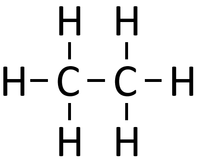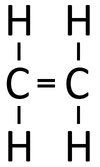Difference between revisions of "Cracking"
| Line 44: | Line 44: | ||
:[https://www.amazon.co.uk/gp/product/1782945571/ref=as_li_tl?ie=UTF8&camp=1634&creative=6738&creativeASIN=1782945571&linkCode=as2&tag=nrjc-21&linkId=9e29fad914244909903e5e93f8a01d96 ''Cracking (of hydrocarbons), page 77, GCSE Chemistry; The Revision Guide, CGP, AQA ''] | :[https://www.amazon.co.uk/gp/product/1782945571/ref=as_li_tl?ie=UTF8&camp=1634&creative=6738&creativeASIN=1782945571&linkCode=as2&tag=nrjc-21&linkId=9e29fad914244909903e5e93f8a01d96 ''Cracking (of hydrocarbons), page 77, GCSE Chemistry; The Revision Guide, CGP, AQA ''] | ||
:[https://www.amazon.co.uk/gp/product/178294639X/ref=as_li_tl?ie=UTF8&camp=1634&creative=6738&creativeASIN=178294639X&linkCode=as2&tag=nrjc-21&linkId=51599bb45a2bfaf7c1b6a978b2ca2616 ''Cracking (of hydrocarbons), pages 194, 195, GCSE Combined Science Trilogy; Chemistry, CGP, AQA ''] | :[https://www.amazon.co.uk/gp/product/178294639X/ref=as_li_tl?ie=UTF8&camp=1634&creative=6738&creativeASIN=178294639X&linkCode=as2&tag=nrjc-21&linkId=51599bb45a2bfaf7c1b6a978b2ca2616 ''Cracking (of hydrocarbons), pages 194, 195, GCSE Combined Science Trilogy; Chemistry, CGP, AQA ''] | ||
| + | :[https://www.amazon.co.uk/gp/product/1471851362/ref=as_li_tl?ie=UTF8&camp=1634&creative=6738&creativeASIN=1471851362&linkCode=as2&tag=nrjc-21&linkId=7d78d70a2044ee9982dae010c94af92a ''Cracking, pages 147-8, GCSE Combined Science Trilogy 2, Hodder, AQA ''] | ||
| + | :[https://www.amazon.co.uk/gp/product/0198359381/ref=as_li_tl?ie=UTF8&camp=1634&creative=6738&creativeASIN=0198359381&linkCode=as2&tag=nrjc-21&linkId=47c8d1ae58d8b3a5e2094cd447154558 ''Cracking, pages 154-55, GCSE Chemistry; Third Edition, Oxford University Press, AQA ''] | ||
| + | :[https://www.amazon.co.uk/gp/product/1471851346/ref=as_li_tl?ie=UTF8&camp=1634&creative=6738&creativeASIN=1471851346&linkCode=as2&tag=nrjc-21&linkId=3ac654f4b0da781c49c855a1af4c92ea ''Cracking, pages 176-7, GCSE Chemistry, Hodder, AQA ''] | ||
| + | :[https://www.amazon.co.uk/gp/product/0008158762/ref=as_li_tl?ie=UTF8&camp=1634&creative=6738&creativeASIN=0008158762&linkCode=as2&tag=nrjc-21&linkId=a0fffa35b3ea49a63404f6704e0df7cc ''Cracking, steam, page 236, GCSE Chemistry; Student Book, Collins, AQA ''] | ||
| + | :[https://www.amazon.co.uk/gp/product/0008158762/ref=as_li_tl?ie=UTF8&camp=1634&creative=6738&creativeASIN=0008158762&linkCode=as2&tag=nrjc-21&linkId=a0fffa35b3ea49a63404f6704e0df7cc ''Cracking; catalytic, page 236-7, GCSE Chemistry; Student Book, Collins, AQA ''] | ||
Revision as of 23:09, 3 November 2019
Key Stage 4
Meaning
Cracking is a Thermal Decomposition process in which large hydrocarbon molecules are broken into smaller hydrocarbon molecules.
About Cracking
- Cracking is often done because Crude Oil contains more large hydrocarbon molecules than can be used and not enough short hydrocarbon molecules than are needed.
- When Crude Oil fractions are cracked the long alkanes are broken down into smaller alkanes and alkenes.
- Cracking is done at very high temperatures (500°C) and uses either a catalyst to aid the reaction or steam.
- When an alkane is cracked into smaller pieces there are not enough Hydrogen [[atom]s to produce two saturated hydrocarbons. One of the hydrocarbons must be unsaturated and therefor will have a double bond.
Examples
| If butane were cracked. | An alkane and an alkene are produced. | |||
Cracking a hydrocarbon can produce many possible products:
Hexadecane → Decane + Hexene
- <chem>C16H34 -> C10H22 + C6H12</chem>
Hexadecane → Decane + Butene + Ethene
- <chem>C16H34 -> C10H22 + C4H8 + C2H4</chem>
Decane → Pentane + Pentene
- <chem>C10H34 -> C5H12 + C5H10</chem>
Decane → Hexane + Butene
- <chem>C10H34 -> C6H14 + C4H8</chem>
References
AQA
- Cracking (of hydrocarbons), page 149, GCSE Combined Science; The Revision Guide, CGP, AQA
- Cracking (of hydrocarbons), page 226, 227, GCSE Chemistry, CGP, AQA
- Cracking (of hydrocarbons), page 77, GCSE Chemistry; The Revision Guide, CGP, AQA
- Cracking (of hydrocarbons), pages 194, 195, GCSE Combined Science Trilogy; Chemistry, CGP, AQA
- Cracking, pages 147-8, GCSE Combined Science Trilogy 2, Hodder, AQA
- Cracking, pages 154-55, GCSE Chemistry; Third Edition, Oxford University Press, AQA
- Cracking, pages 176-7, GCSE Chemistry, Hodder, AQA
- Cracking, steam, page 236, GCSE Chemistry; Student Book, Collins, AQA
- Cracking; catalytic, page 236-7, GCSE Chemistry; Student Book, Collins, AQA



